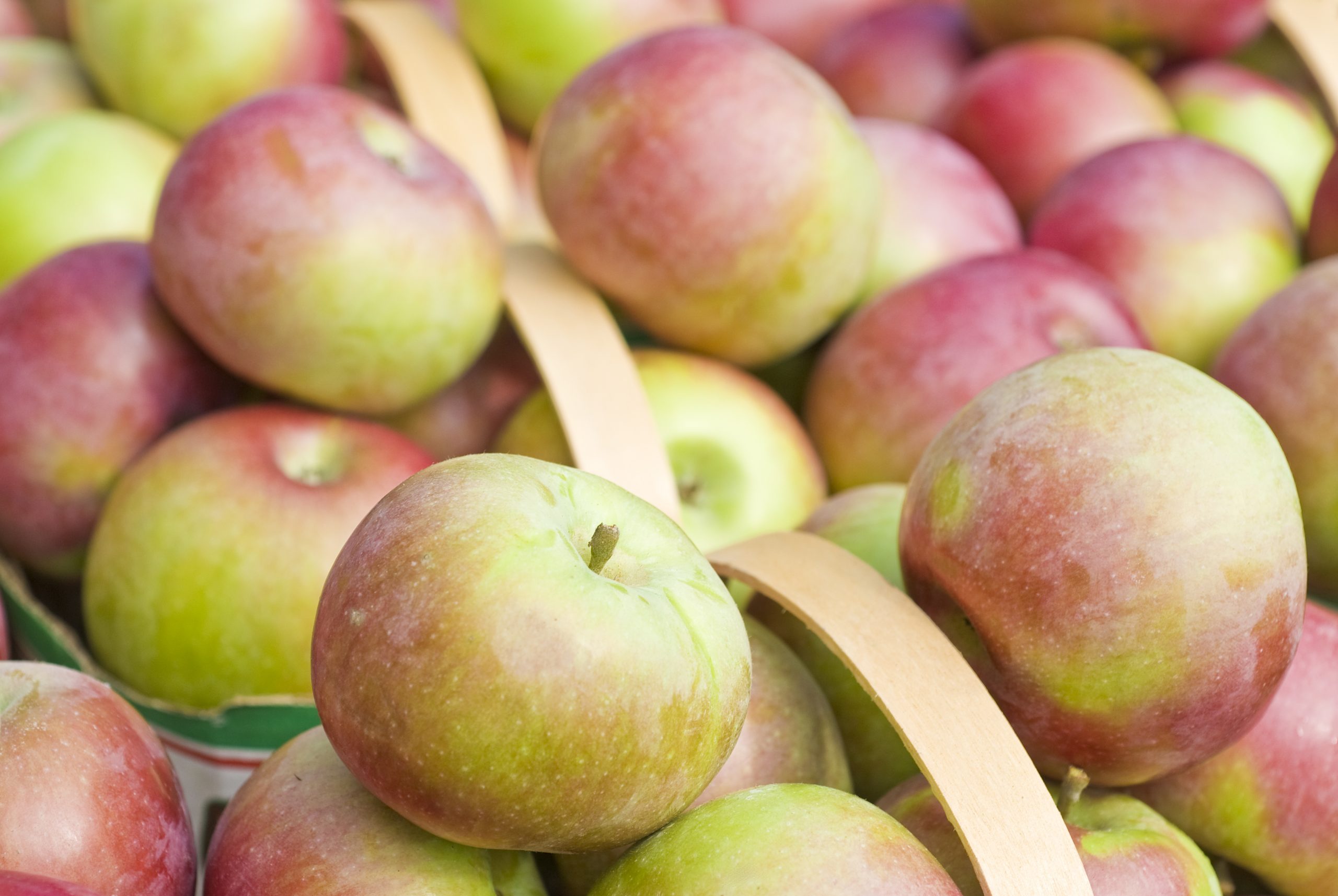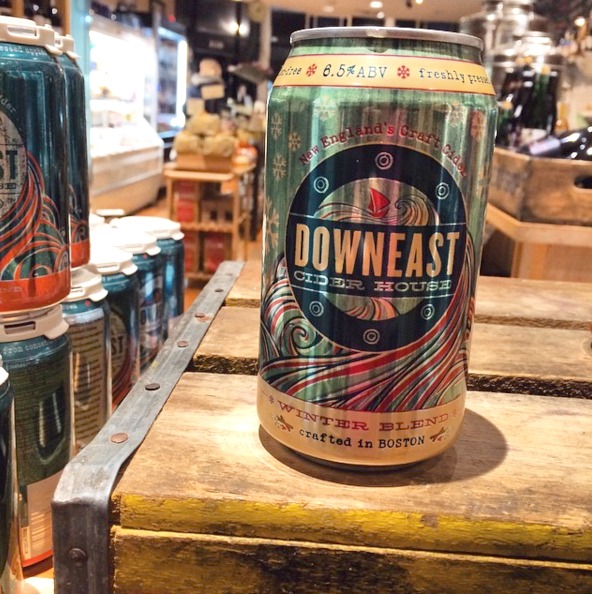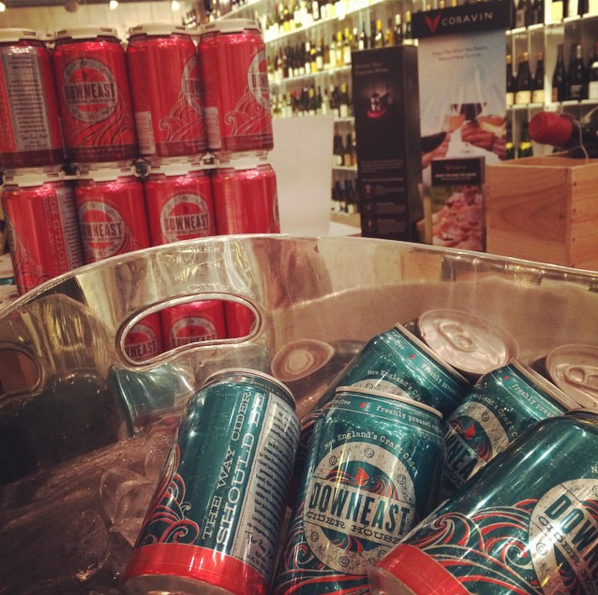


About a year and a half ago, I had my first Downeast Cider.
I’ve always been a fan of hard cider, but I had never tried a hard cider intended to taste like authentic, freshly pressed apple cider. You know? The thick apple consistency. The “nostalgia juice” New Englanders happily drank while visiting apple orchards in the fall or at family gatherings during the holidays when we were too young for adult beverages.
Needless to say, I was intrigued.
After further investigation, I discovered why Downeast tastes like real apple cider— it’s made from locally grown apples, freshly pressed juice (never from concentrate), and ale yeast. The most critical aspect is the fact Downeast Cider is left unfiltered to maintain a pure apple flavor. As a bonus, it’s naturally gluten-free.
In short, it tastes like real apple cider because it is real apple cider.
When I had my first sip, Downeast wasn’t a widely known brand, but now it’s a well-known craft cider name in the New England area. You can walk into almost any Boston bar and order one (sometimes it’s even on draught!) and most liquor stores and specialty grocery stores have it stocked.
Recently, I had a chance to sit down with one of the original founders, Tyler Mosher, to hear the Downeast story straight from the source. As we perched on some empty kegs in the Charlestown cider house, this is what he had to say.

“It all started at Bates College. A friend of Ross (the other founder) and mine had an apple orchard in Vassalboro, ME. We’d often get bushels of fresh apples from the orchard. Pretty soon, we got fairly snobby about the apples and only ate the best in the bunch. We all developed a love of apples and apple cider. When senior year rolled around, my dad suggested we start a hard cider company together. He explained how hard cider is popular all over the world, but not popular in the US. We probably took that statement a little more seriously than he had intended.”
“We noticed a few things about the hard cider market. The first was the fact that mass-produced cider wasn’t up to our standards, which had been raised by eating fresh apples and drinking fresh juice. The spectrum of ciders consisted of the very sweet stuff made by huge companies, and the smaller craft companies making traditional cider that tasted more like white wine or apple champagne. In our opinion, those two options weren’t good enough for us because they didn’t fall in line with our connotations for the word cider. We were upset about this.”
“The other thing we realized was that craft beer was really popular. It doesn’t sound revolutionary, but as a college kids drinking Keystone Light and Milwaukee’s Best it was, for us… We realized we might be able to build on the craft beer movement with hard cider. Except, we wanted our cider to taste like freshly pressed apple juice. We didn’t know how we were going to do it, yet, but we started making test batches of hard cider during our senior year.”
“Just after graduation, we moved up to Waterville, Maine where we lived on a farm for about six months. We practiced making hard cider all the time, and at this point, we had a couple breakthroughs. The first, in regards to our cider, was that we needed to add a bunch of tannin for it to taste the way we wanted it to. That was pretty big for us.”
“The second breakthrough was fermenting our cider with ale yeast. We wanted our cider to align more with beer instead of wine. We felt like the champagne style ciders weren’t making themselves accessible to the average pub-drinking person. So, we decided, we’d ferment with ale yeast. As a bonus, it tasted better. The third thing we realized was that we didn’t want to filter our cider. This revelation came after we purchased our first piece of equipment, a filter. We sold the filter after we realized filtering stripped out all of the apple flavor we wanted to retain.”

“In Waterville, we had a small, terrible space. At one point in time, it was the bathroom of the mill. We occupied it because it had tile floors and drains. I don’t like telling people that, I think it’s kind of embarrassing. Our first dollars were made by scraping stalls of the bathroom.”
“We sold our first kegs in January of 2012. Pretty soon, we realized people like our cider. At this point, we bit off a little more than we could chew and started distributing to Massachusetts. Our orders tripled overnight and we couldn’t fill any of the orders. Obviously, this caused a lot of issues for us. The person Ross and I started the company with quit. Our apple supplier ran out of apples. Our already insufficient space became unbearable. Finally, we didn’t have enough kegs to put our cider in.
“First, we found a new apple supplier in Massachusetts. Fortunately, our new found apple supplier allowed us to move into his facility in Leominster, MA. We got our feet back under ourselves, bought a manual canning line and started canning. Around the same time, Matt joined us. Then, we moved out of the place in Leominster when we found the space in Charlestown. At this point, the business started to gain momentum. We realized it was something bigger than, ‘just us.’ It’s not just about our daily efforts or waking up in the morning every day, it’s a whole bunch of people’s efforts after waking up in the morning.”
“Throughout the entirety of building this company, we’ve made a bunch of mistakes, but our saving grace is our attention to customer service. We stand behind our product and our customers come first.”
Downeast Cider is currently distributed to New England, New York, and New Jersey with plans for expansion. Don’t ask them where because they don’t know. The Original Blend and Cranberry Blend are sold in both 12oz. can 4-packs and on draft year round. Downeast also sells an Original and a Seasonal Sampler 12oz. can 9-pack year round.
From January through March, the seasonal Maple Blend is sold in 12oz. can 4-packs. There are also other specialty offerings currently available on draft. For more information about stocking your bar with Downeast Cider, check out their goods page or contact sales@downeastcider.com.
In the fall, Downeast plans to open up another facility in East Boston at 256 Marginal St. The new space will be used for increased production. The Charlestown location will remain open for tours, events, and the bar.
